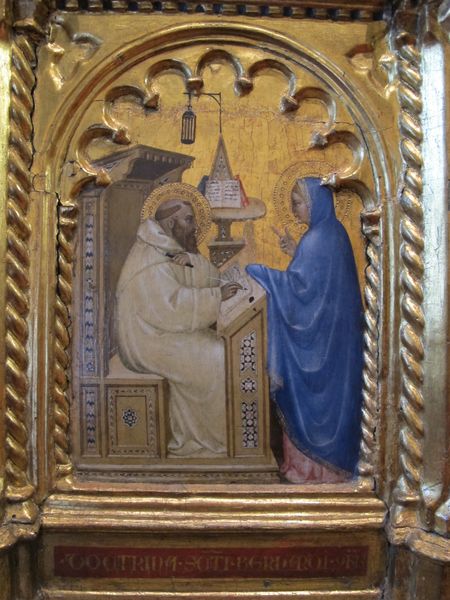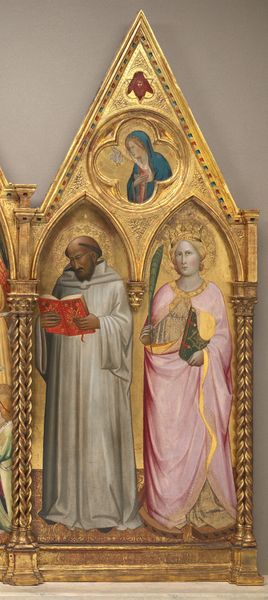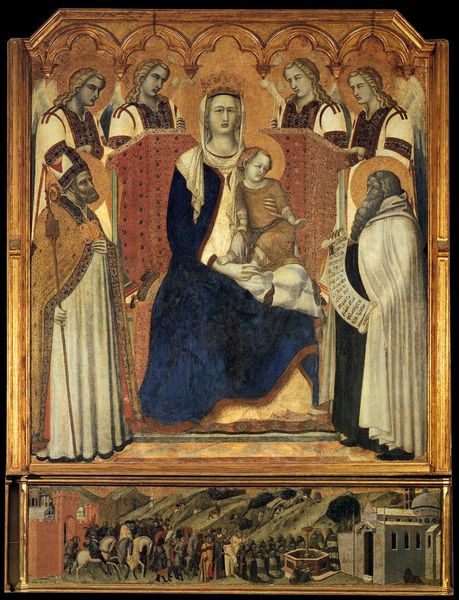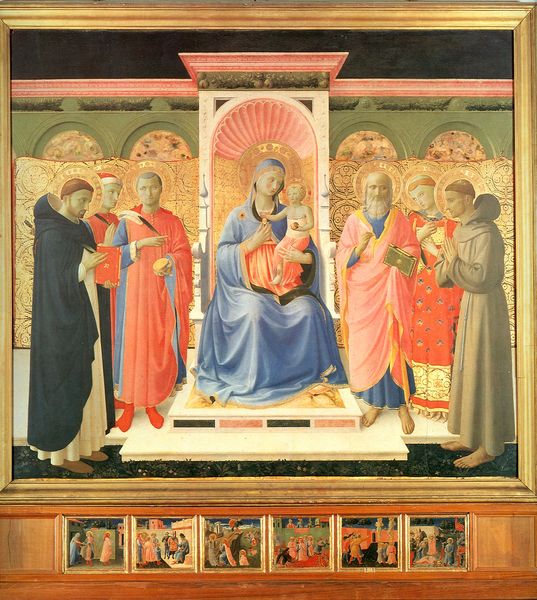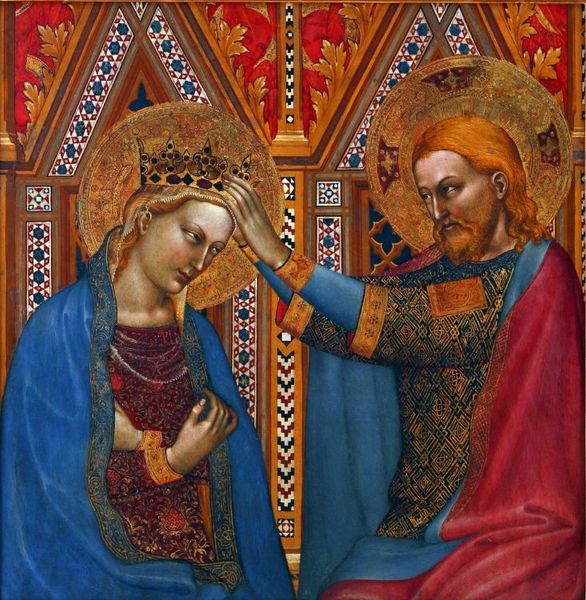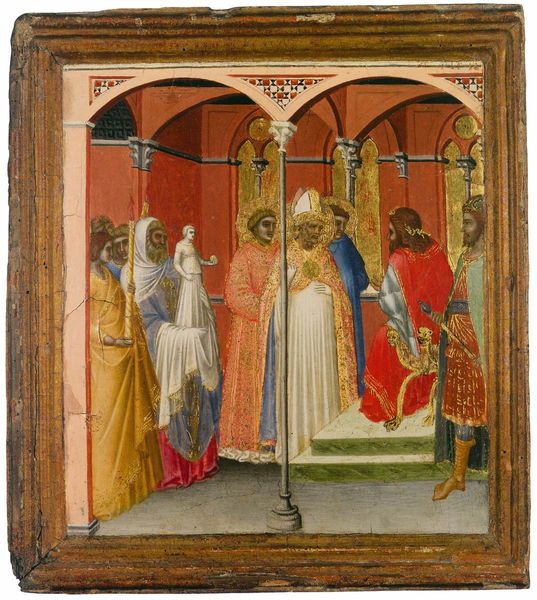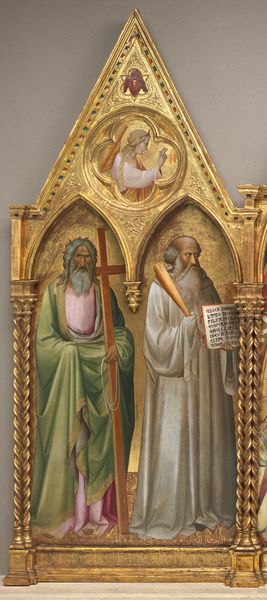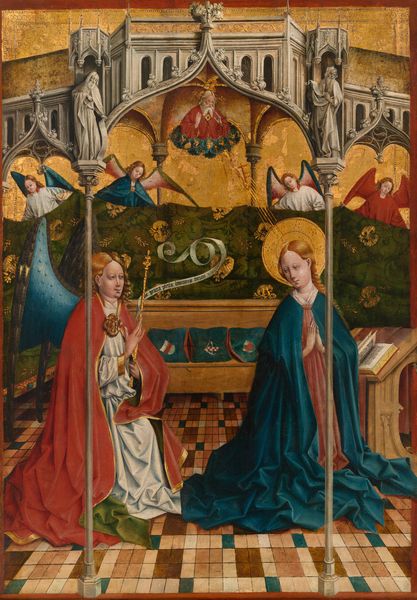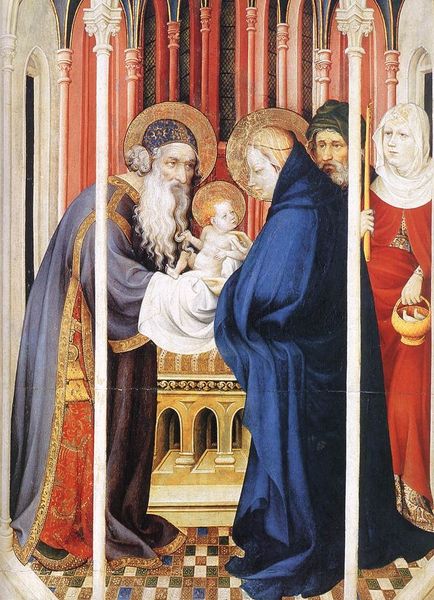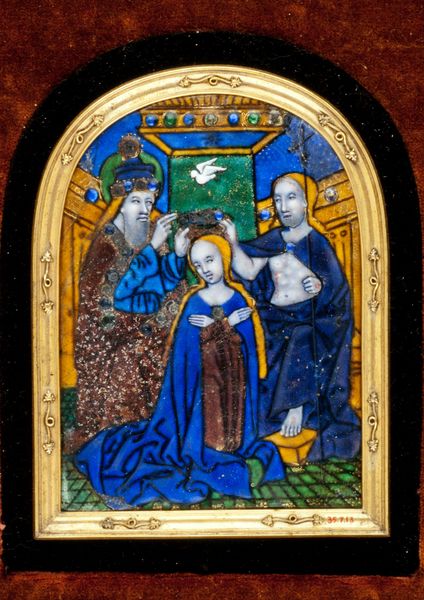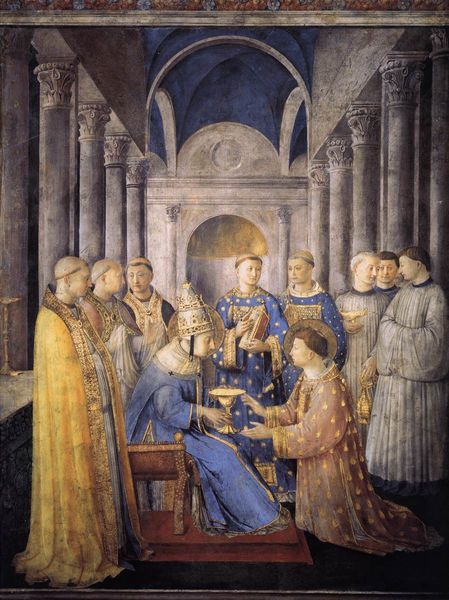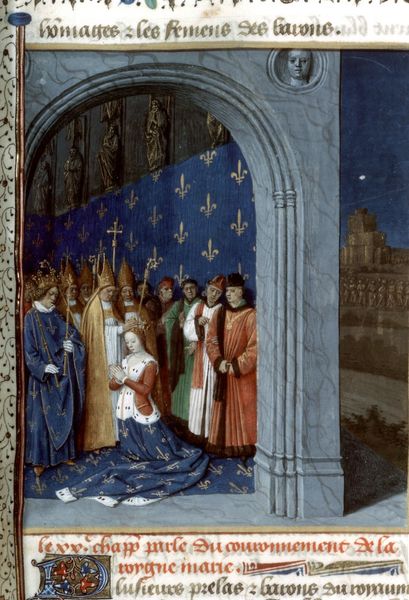
panel, carving, tempera, painting
#
medieval
#
panel
#
carving
#
narrative-art
#
tempera
#
painting
#
sculpture
#
figuration
#
oil painting
#
italian-renaissance
Copyright: Public domain
Curator: Looking at this panel painting, the first thing that strikes me is the meticulous detail, the careful rendering of texture in the drapery and the luminosity achieved despite its age. Editor: Indeed. This is "Apparizione della Vergine a S. Bernardo" (Apparition of the Virgin to St. Bernard), executed around 1355 by Giovanni da Milano. It’s tempera on panel. Curator: Knowing it's tempera really shifts my perspective. I am wondering how the artist manipulated this particular medium to attain such smoothness and definition. Consider the surface preparation needed, the layering of pigments… Editor: From an art historical viewpoint, this piece is fascinating because it illustrates a key theme of its era: the intersection of the divine and the scholarly. The Virgin appearing to St. Bernard highlights the intellectual and spiritual foundations of the church. It speaks to power structures that helped elevate these stories in cultural narratives. Curator: Absolutely, and beyond the theological implications, let's think about the panel itself. Where would this have hung? Was it commissioned by a wealthy patron for a private chapel, or was it destined for a public altar? This placement dictated the experience of viewing the work and also tells us something about the accessibility of religious art in that historical period. Editor: The presence of gold leaf would have also impacted the reading. Gold elevates it from the realm of craft or basic devotional aid to become an ostentatious display, confirming religious status but perhaps revealing class presumptions inherent in this representation. Curator: Right. How were the raw materials acquired? Who were the craftspeople who prepared the panels, ground the pigments, applied the gilding? The final result hides a wealth of social and economic relationships behind the beautiful art itself. Editor: Seeing such detailed attention to labor and the making process does refocus my attention toward broader, cultural issues that informed artistic development. Curator: Ultimately, engaging with art like this pushes us to acknowledge how material culture transmits historical ideas and social positions.
Comments
No comments
Be the first to comment and join the conversation on the ultimate creative platform.
